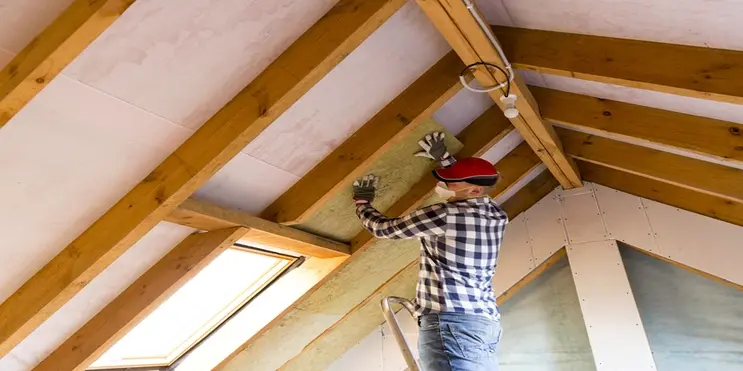
Your roof handles a lot more than just rain. In Texas, it takes on blazing heat, high winds, hail, and sudden storms. Over time, even the most well-built roofing system will begin to show wear. If you catch the early signs of trouble, you can avoid much larger—and more expensive—repairs later on. Many homeowners miss these early signals until damage spreads to the interior.
Missing or Damaged Shingles After a Storm
High winds and severe weather are common in Texas, especially during spring and summer. After a storm passes, it’s a smart move to inspect your roof or have a professional do it for you. Missing shingles are an obvious warning, but even curled, cracked, or bruised shingles signal trouble.
Shingles protect the underlying structure of your roof. When they’re missing or damaged, water can seep in, causing rot and weakening your roof deck. If you spot granules from asphalt shingles piling up in your gutters, that’s another red flag. These granules are a protective layer, and when they start wearing off, your roof is becoming more vulnerable to the sun and rain.
Water Stains or Discoloration on Ceilings
Water stains on your ceilings or walls usually mean a leak is present. It may not seem like a major problem at first—just a light brown spot that doesn’t grow very fast—but even a slow leak can cause major issues. Over time, moisture can build up behind your drywall, damage insulation, and promote mold growth.
In Texas, sudden weather changes can expand and contract roofing materials, which creates small openings that let water in. If you notice even a small water mark inside your home, don’t wait for the next rainstorm to investigate. It’s likely your roof is letting in moisture somewhere.
Sagging Roof Sections
If your roofline is no longer straight, that’s a sign of structural stress. A sagging roof is never normal and usually indicates one of three things—trapped moisture weakening the decking, an overloaded roof structure, or failure of support beams.
In hot and humid Texas regions, roofs with poor ventilation can hold moisture underneath for too long. Over time, this rots the decking and weakens the support system. Sagging spots may not leak immediately, but they will almost always worsen. This is not a repair to delay—left alone, sagging can lead to roof collapse in extreme cases.
Rising Energy Bills Without a Clear Cause
If your heating and cooling costs are climbing but your usage habits haven’t changed, your roof could be to blame. Poor insulation, gaps in the roofing system, or damaged attic ventilation can all lead to energy loss.
Texas summers put a strain on your cooling system. A compromised roof lets hot air into your attic or allows conditioned air to escape, forcing your HVAC system to work harder. If you’ve sealed your windows and doors but still see energy bills creeping up, consider having a professional roof inspection done. Often, the issue lies overhead.
Mold or Algae on Your Roof Surface
Dark streaks or green patches on your roof might not seem serious at first glance, but they can be early signs of long-term water retention. Algae, moss, or mold tend to grow in areas that stay damp. Over time, this moisture degrades your shingles and weakens the underlayment.
In Texas, humidity and shade make the perfect conditions for organic growth on roofs. If left alone, this growth can eat away at roofing material and lead to soft spots. While power washing may remove the surface layer, it doesn’t solve the underlying moisture problem. Professional cleaning and repairs can help restore your roof and prevent further damage.
Why Timely Roof Repairs Matter in Texas
Ignoring small roof issues can lead to major problems, especially in Texas where the weather can go from clear skies to damaging storms within hours. Once water gets under your roofing materials, it spreads quickly. Wood can rot, insulation can lose its effectiveness, and mold can develop in unseen areas. What starts as a small fix could become a full roof replacement.
Roof repairs also help maintain the value of your home. Buyers in Texas often ask about the age and condition of a roof, knowing how the climate can shorten its life. Even if you’re not planning to sell, keeping your roof in good shape prevents larger financial headaches later on.
How Often Should You Check Your Roof?
Experts recommend inspecting your roof twice a year—once in the spring and again in the fall. You should also check after any major storm or hail event. Texas homes, especially those with older roofs, may need more frequent checks. Some problems are hard to spot from the ground, so don’t hesitate to call a roofing professional if something looks off.
Even if you don’t see obvious damage, your roof could have hidden issues. Regular inspections help catch these early. Many roofing companies offer free or low-cost assessments, which can give you peace of mind heading into storm season.
Conclusion
Your roof is one of the most important parts of your home, but also one of the easiest to overlook. If you notice any of these warning signs—missing shingles, water stains, sagging areas, higher utility bills, or algae growth—it’s time to take action. The sooner a problem is addressed, the easier and more affordable it is to fix.
In a state like Texas, where extreme weather is a regular occurrence, a well-maintained roof is more than just a convenience. It’s a necessity. Routine care and timely repairs can extend the life of your roof and protect your home for years to come.